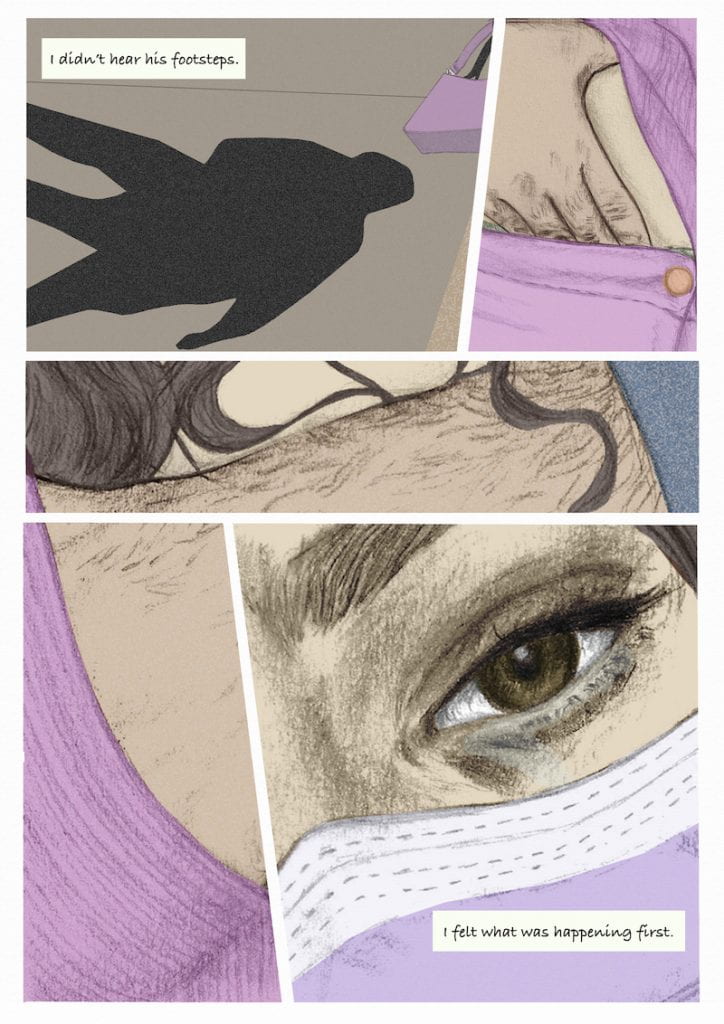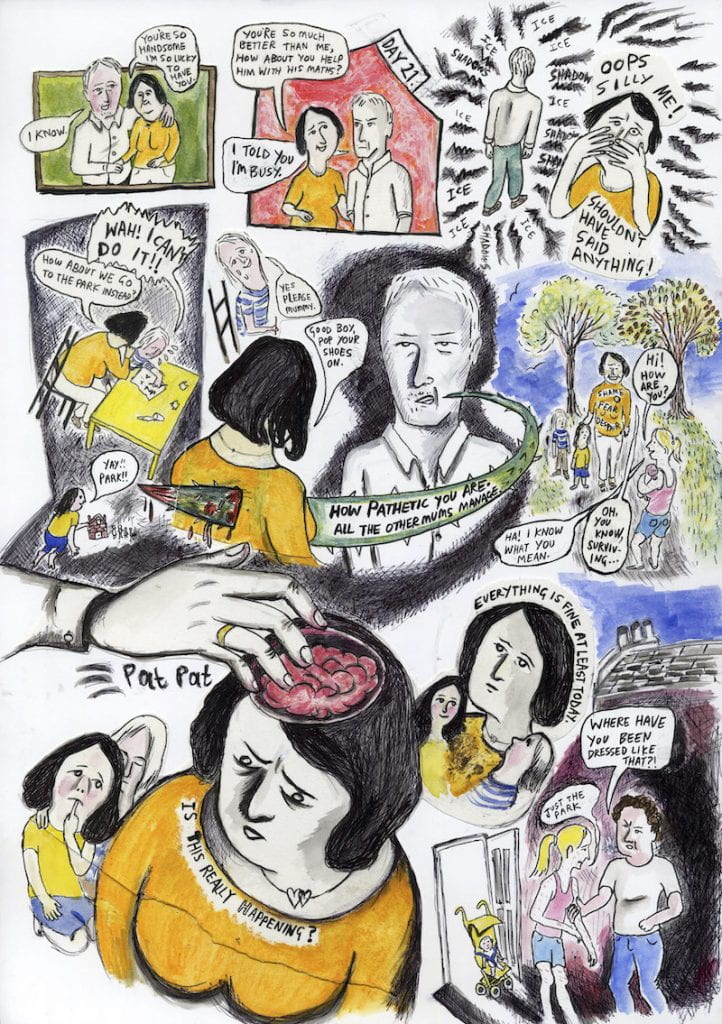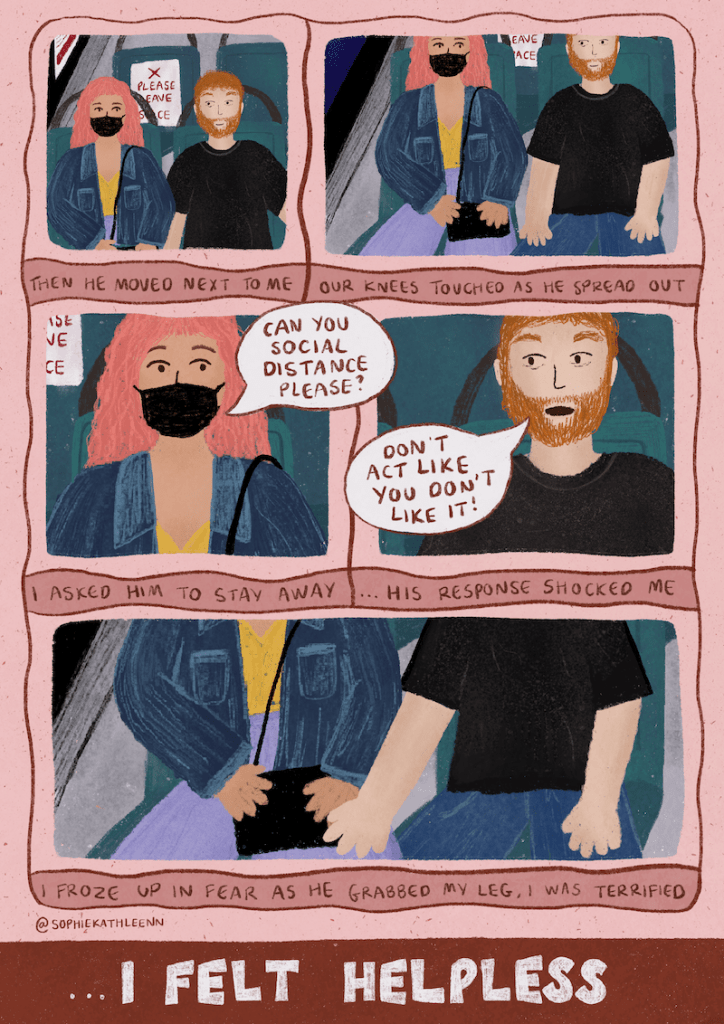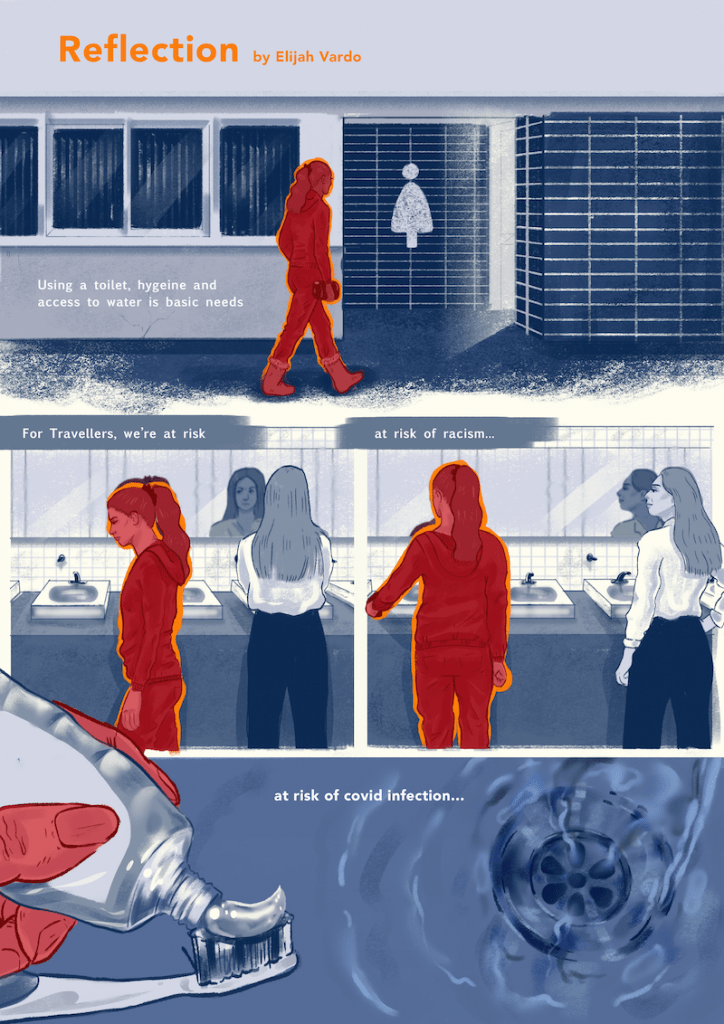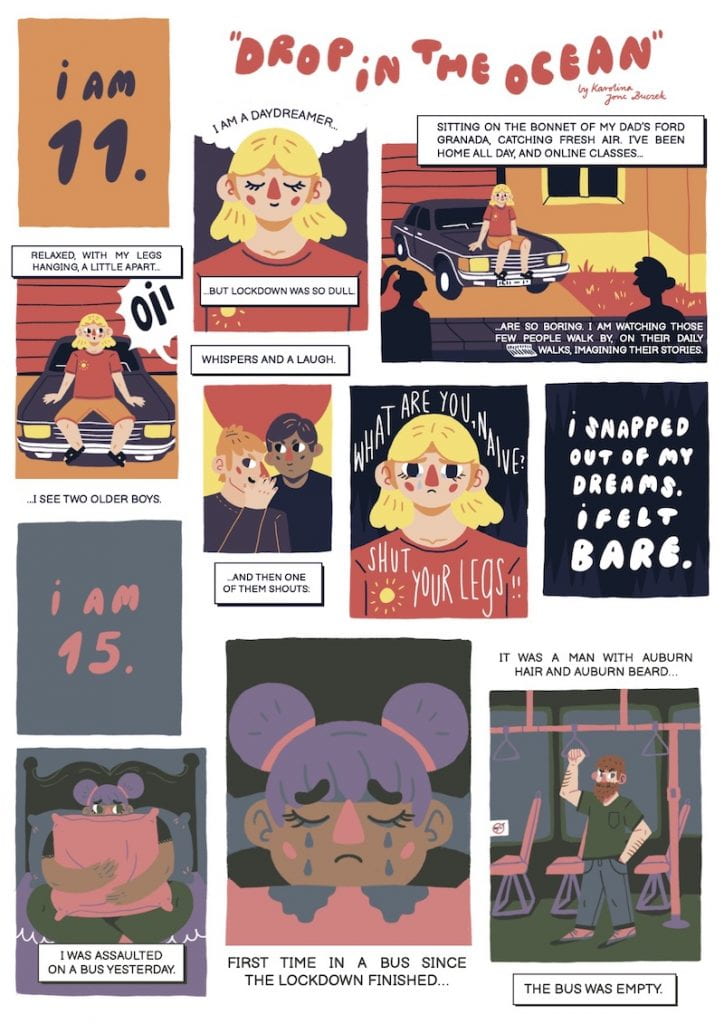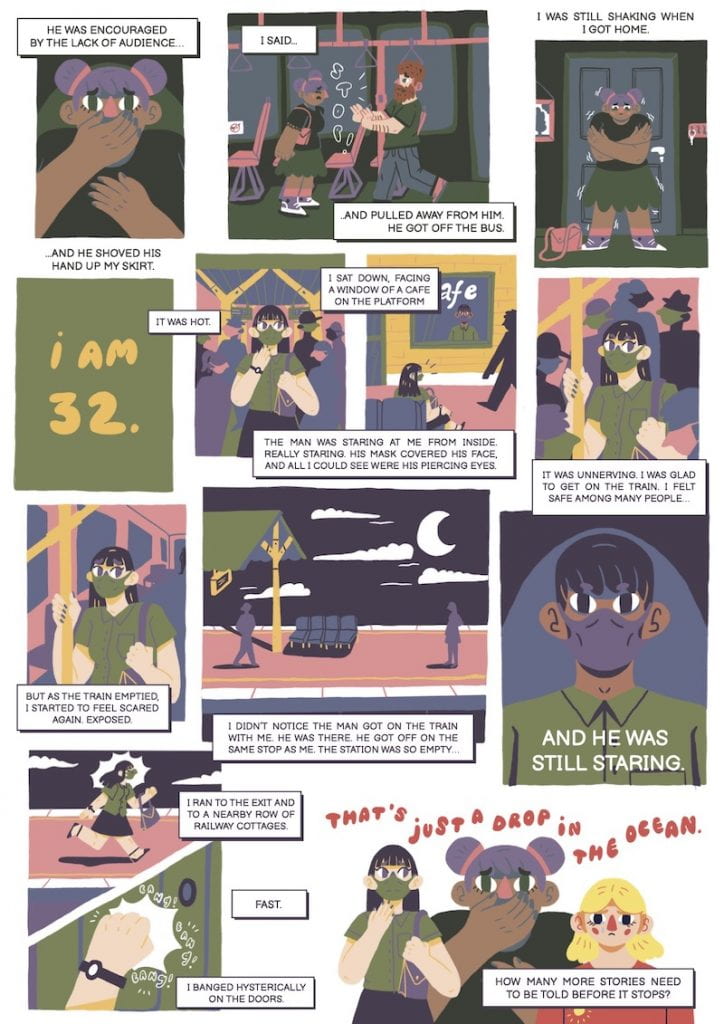Words by Ash Sarkar
Art by Sabba Khan
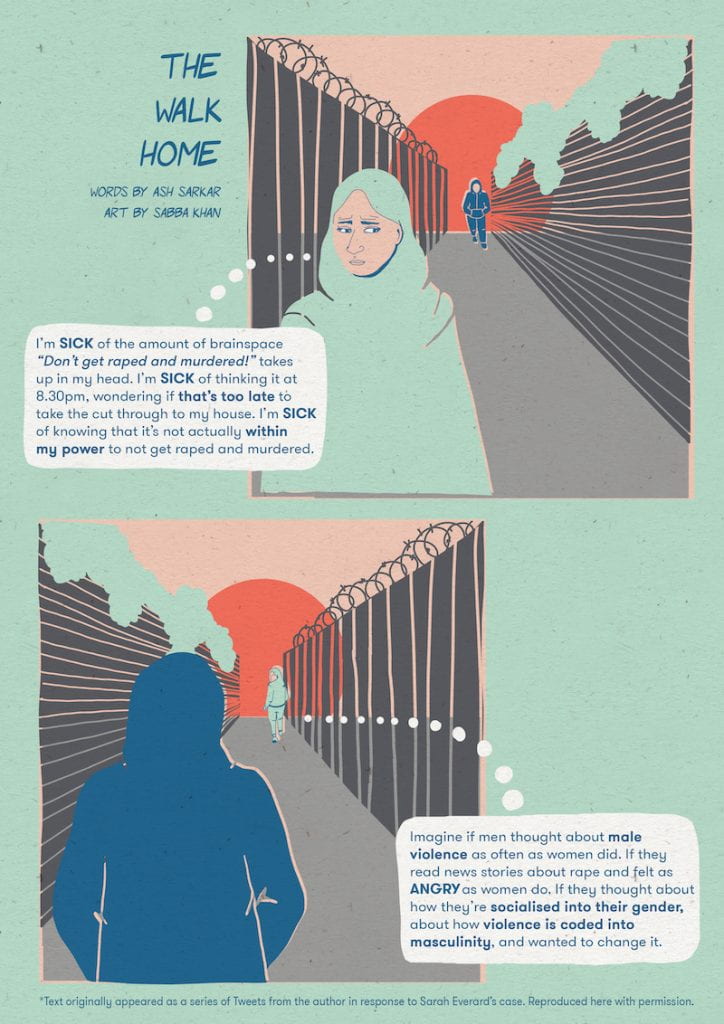
Acerca de la artista
Sabba Khan nació y se crio en el Este de Londres. Originalmente formada como arquitecta en la Central Saint Martins y la Universidad de Westminster, Sabba encuadra sus cómics arquitectónicos minimalistas inspirándose en las experiencias vividas de su crianza como inmigrante de segunda generación en una familia de clase trabajadora. Su primera novela gráfica, The Roles We Play [Los roles que asumimos] ha ganado el Premio Jhalak 2022 y el Premio Broken Frontier’s Break Out Talent ’22 (Talento Emergente Traspasando Fronteras 2022). La nominaciones incluyen el Premio Ignatz, el premio Ondaatje de la Royal Society of Literature, el premio de la British Book Design Awards y el premio de la AOI’s World Illustrations Awards, así como la nominación a los mejores libros de 2021 de The Guardian. Los colaboradores en la obra gráfica de Khan incluyen el Consejo Británico, SOAS, NHS, London Borough de Newham, JCWI y la Biblioteca británica. The Roles We Play [Los roles que asumimos] se encuentra disponible en los EE. UU. con el título de What is Home, Mum? [¿Qué significa “casa”, mamá?]. Sabba Khan es codirectora de Khan Bonshek, un bufete arquitectónico establecido por ella misma y su pareja en Stratford, Londres, donde están por completar la etapa final de su casa autoconstruida. También es Profesora Asociada de la Chelsea School of Art (Escuela de Artes de Chelsea).
About the artist
Sabba Khan is a born and bred East Londoner. Originally trained as an architect at Central Saint Martins and The University of Westminster, Sabba frames her minimal architectural comics through the lived experience of her working class, second generation immigrant upbringing. Sabba’s debut graphic novel ‘The Roles We Play’ has won the Jhalak Prize ’22, and Broken Frontier’s Break Out Talent ’22. Nominations include the Ignatz prize, Royal Society of Literature’s Ondaatje Prize, British Book Design Awards and AOI’s World Illustrations Awards, as well as being nominated for best books of 2021 in the Guardian. Collaborators for Khan’s comics work include The British Council, SOAS, NHS, London Borough of Newham, JCWI and The British Library. The Roles We Play is available in the US under the title ‘What is Home, Mum?’. Sabba Khan is co-director of Khan Bonshek, an architectural practice set up by her and her partner in Stratford, London, where both are completing the final stages of their self-build home. She is also an Associate Lecturer at Chelsea School of Art.

